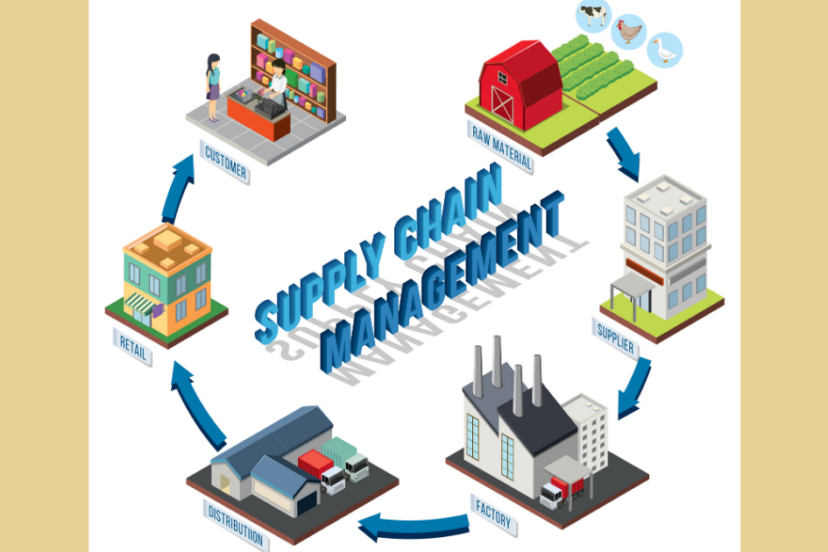Nourishing the Future: How Artificial Intelligence and Blockchain are Changing Food Supply Chain
Welcome to a world where your food tells a story – how it’s grown, transported, and brought to your table. It’s a world where technology plays a significant role in making sure what you eat is safe, sustainable, and easy to trace. This blog will explore two exciting technologies: artificial intelligence and blockchain. But don’t worry, we won’t get too technical. We’ll break things down in a way that’s easy to understand so you can see how these innovations are making your food better.
Whether you’re a food lover, a tech enthusiast, or just curious about what’s on your plate, this blog guides how technology changes our eating. So, let’s dig in and discover how the future of food is getting a high-tech upgrade!
Challenges in the Current Food Supply Chain
Inefficiencies and Food Wastage:
The food supply chain can sometimes resemble a maze with many twists and turns. Delays, excessive handling, and food spoiling opportunities often occur along the way. This inefficiency costs money and contributes to a massive problem: food wastage. We’re talking about delicious food going to waste, and that’s not just bad for our wallets and the environment.
Lack of Transparency and Traceability:
Ever wonder where your food comes from? In the current supply chain, it can be a mystery. Information about a product’s origin and journey to your plate is often hidden. This lack of transparency erodes trust – consumers want to know what they eat and where it’s been. Without that information, it’s like eating in the dark.
Combining Artificial Intelligence and Blockchain for Food Supply Chain
The real magic happens when AI and blockchain are combined. AI processes the vast amounts of data generated by blockchain, extracting valuable insights that can be used to optimize supply chains, improve product quality, and enhance overall efficiency. This synergy ensures that the food supply chain is more transparent, secure, intelligent, and capable of adapting to changing conditions and consumer demands.
Companies like IBM Food Trust and Walmart are pioneering the integration of blockchain and AI in their supply chains. These systems have demonstrated significant reductions in food wastage and improved transparency.
Artificial Intelligence and Blockchain’s Impact on the Food Supply Chain
Two cutting-edge technologies, artificial intelligence (AI) and blockchain, are reshaping the food supply chain. Explore their far-reaching effects with me:
AI in the Food Supply Chain:
Demand Forecasting: AI algorithms analyze historical data, weather patterns, and consumer behavior to predict demand accurately. This helps producers and suppliers optimize inventory levels and prevent overstock or shortages.
Supply Chain Optimization: AI can optimize transportation routes, reduce fuel consumption, and enhance delivery schedules. It minimizes delays, reduces costs, and optimizes perishable goods to reach consumers.
Quality Control: AI-powered sensors and cameras monitor the condition of food products in real time during transportation and storage. If any issues are detected, alerts are sent, allowing immediate corrective actions to maintain product quality.
Food Safety: AI can rapidly identify contaminated or spoiled food items by analyzing sensor data, ensuring quicker and more precise recalls and enhancing overall food safety.
Inventory Management: AI-driven systems can automate inventory management, reducing wastage due to expired or damaged products and ensuring that stock levels are always optimized.
Blockchain in the Food Supply Chain:
Transparency and Traceability: Blockchain creates an immutable record of every step in the supply chain. This allows consumers to trace the origin of a product, including details about the farm, processing, and transportation, fostering trust and transparency.
Authentication and Anti-Counterfeiting: Blockchain can verify the authenticity of organic or specialty certifications, helping consumers make informed choices. It also prevents counterfeiting by ensuring that products cannot be falsely labeled.
Recalls and Safety: In the event of a food safety issue or product recall, blockchain enables swift identification of affected batches, reducing the impact on consumers and improving overall safety.
Efficiency and Reduced Fraud: Blockchain eliminates intermediaries and reduces paperwork, resulting in cost savings and fewer opportunities for fraud or errors in record-keeping.
Sustainability and Ethical Sourcing: Consumers increasingly want to know if their food is sustainable. Blockchain can provide detailed information about the supply chain’s environmental and ethical practices.
Drawbacks of Using Artificial Intelligence and Blockchain
High Initial Costs and Complexity:
Implementing AI and blockchain technologies involves significant upfront costs. AI systems require specialized hardware and software, and blockchain networks may require substantial computational power. This cost can be a barrier to entry, particularly for small and medium-sized businesses. Additionally, integrating these technologies can be complex and disrupt existing supply chain processes, requiring extensive planning and resources to ensure a seamless transition.
Privacy Concerns:
While blockchain is celebrated for transparency, it can also raise privacy concerns. In a blockchain, data is stored across a network of nodes, making it visible to all participants. This transparency can be problematic in sensitive information, such as personal or proprietary data. Balancing the benefits of transparency with the need for data protection and consumer privacy is a challenge that organizations must address carefully.
Adoption Challenges:
Convincing all participants in a supply chain to adopt AI and blockchain technologies can be challenging. Resistance may occur due to a lack of understanding, anxiety about additional expenditures, or apprehension about disturbance. Achieving widespread adoption and ensuring that all stakeholders collaborate effectively is essential for realizing the full benefits of these technologies.
Regulatory Compliance:
The regulatory landscape for AI and blockchain is continually evolving. Compliance with these regulations can be complicated, necessitating constant changes to systems and practices. Failure to comply with emerging regulations can result in legal issues and penalties. Staying updated on regulatory changes and adapting to them is crucial to using these technologies.
Environmental Impact:
Blockchain technology, particularly in the case of cryptocurrencies like Bitcoin, has faced criticism for its significant energy consumption. Mining, the process of validating and adding transactions to the blockchain, frequently includes energy-intensive computations. While efforts are underway to develop more energy-efficient blockchain protocols, organizations using blockchain should consider the environmental impact and explore eco-friendly alternatives.
Conclusion
In conclusion, the partnership between blockchain and AI is like a superhero duo for the food supply chain. Picture it as a well-choreographed dance, where blockchain sets the stage and AI dazzles with its efficiency and insights. Together, they are changing how we get our food in fantastic ways.
Think about a world where food waste is drastically reduced, and you can track your food’s journey from farm to fork with a simple scan. These aren’t just fancy tech words; they are reshaping how we grow, distribute, and enjoy food, making it safer, fresher, and more eco-friendly.
So, while we savor the tasty benefits of these innovations, let’s also celebrate that we’re shaping a food supply chain that’s efficient and genuinely good for us and our planet. Cheers to that!
FAQs
Can blockchain and AI really reduce food wastage significantly? By improving traceability, optimizing supply chains, and enhancing data-driven decision-making, blockchain and AI can substantially reduce food wastage.
Are there any privacy concerns associated with blockchain and AI in the food supply chain? Yes, the transparency offered by blockchain can raise privacy concerns. It’s essential to balance transparency and individual privacy through careful implementation and data protection measures.
How can smaller businesses in the food industry afford these technologies? While the initial investment can be a challenge, increasingly affordable solutions and partnerships are available for smaller businesses looking to adopt blockchain and AI in their supply chains.
Are there any regulations in place to ensure the ethical use of these technologies in the food industry? Yes, regulations governing the use of blockchain and AI in the food industry are evolving to ensure ethical and safe practices.
What are some potential future innovations in the food supply chain related to blockchain and AI? Future innovations include even more accurate demand forecasting using machine learning, energy-efficient blockchain protocols, and increased integration of AI-driven automation throughout the supply chain.




